We Found the Most Scenic Spots to View the Total Solar Eclipse
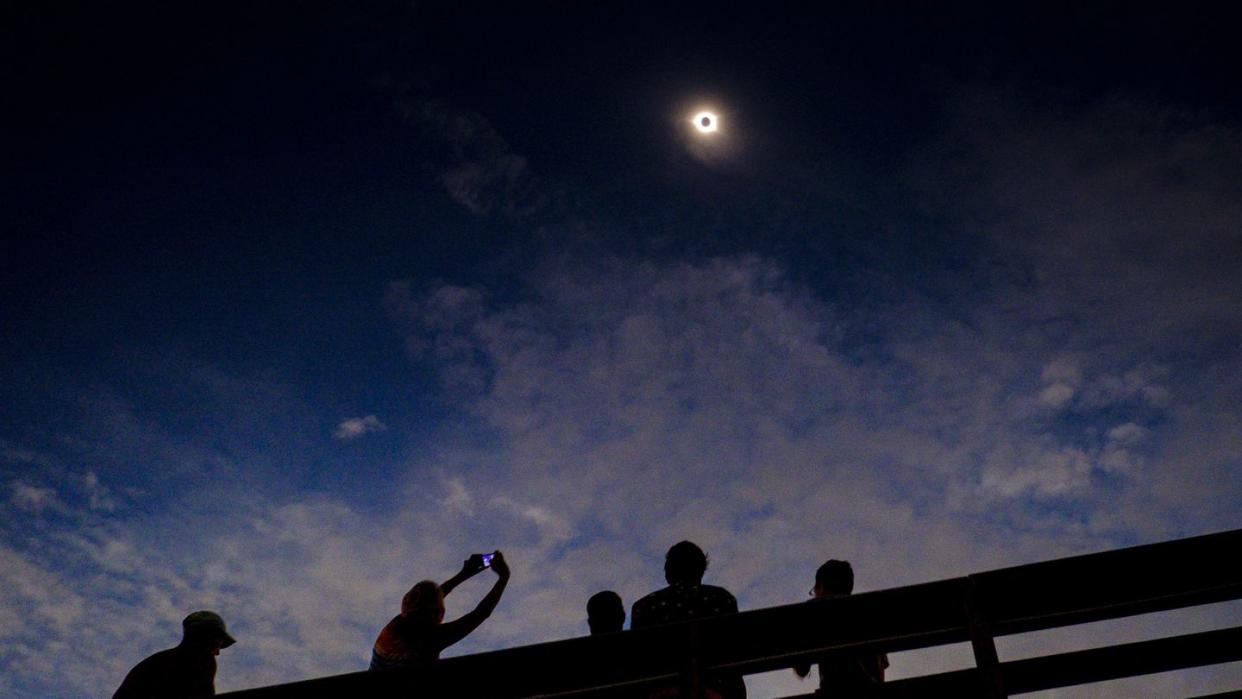
Monday, April 8 sees the first total solar eclipse since 2017 make its way across North America. According to NASA, the path of totality—a band about 115-miles wide where the moon completely blocks the visible surface of the sun—will pass through Mexico, then make its way across Texas, Oklahoma, Arkansas, Missouri, Illinois, Kentucky, Indiana, Ohio, Pennsylvania, New York, Vermont, New Hampshire, and Maine. Totality will last between three-and-a-half and four minutes in most places along the path.
While almost all of North America with clear skies will experience a partial eclipse, what makes the path of totality special is the ability to see the sun’s outer atmosphere, the corona, which isn’t normally visible because of the brightness of the sun’s photosphere. According to the American Astronomical Society, viewers in the path of totality can also expect the sky to turn a beautiful twilight blue with streaks of the oranges, reds, and yellows seen at sunset and sunrise.
Since the next total eclipse visible from the contiguous United States won’t take place until 2044, cities and towns within the path of totality are understandably going all with events both on and leading up April 8. From state parks to science museums to small-town squares, here are some of the top spots to take in this incredible celestial event across the U.S.
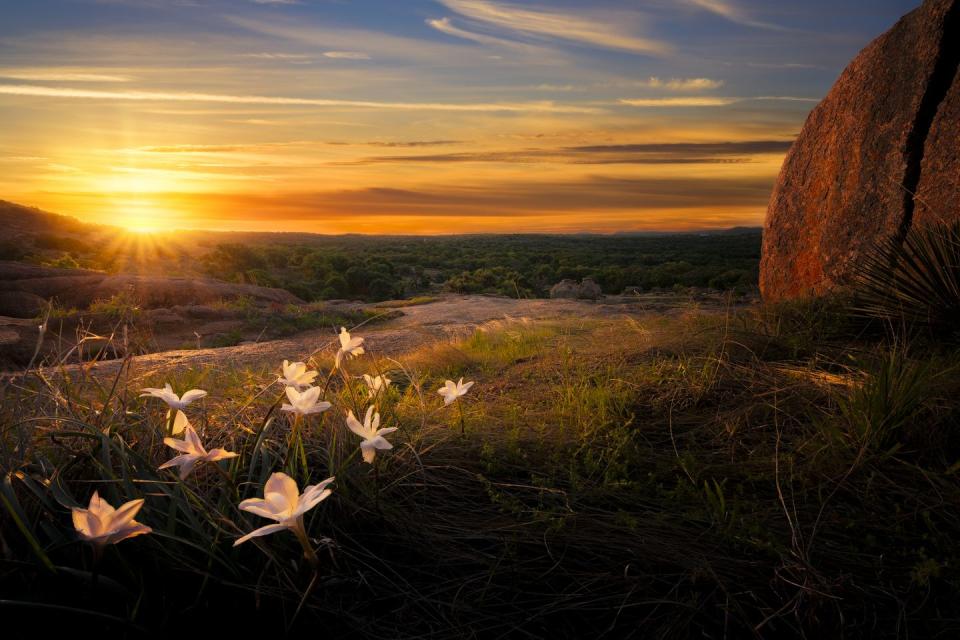
Texas
Texas Hill Country offers both pretty small towns and more remote locations to take in the eclipse. In Fredericksburg, visitors can join Bill Nye and members of the Planetary Society for a two-day, family-friendly Eclipse-O-Rama camping festival on April 7 and 8. In Driftwood, Vista Brewing is hosting a family-friendly Eclipse Fest on its 21-acre ranch with live music, food, and a special "Eclipse Rye Barrel Aged Dark Skies Black Pilsner," while in Kerrville, a free event in Louise Hays Park includes musical performances, kids activities, and talks from NASA scientists. Texas state parks like Enchanted Rock are also welcoming eclipse watchers–just be sure to make a reservation as they're bound to get busy.
Four hours north, the town of Grapevine (located on the edge of Dallas, the largest city along the path of totality) is hosting a watch party on historic Main Street with live music and food. Families can also check out Meow Wolf Grapevine's kid-friendly event with crafts, face painting, and more.
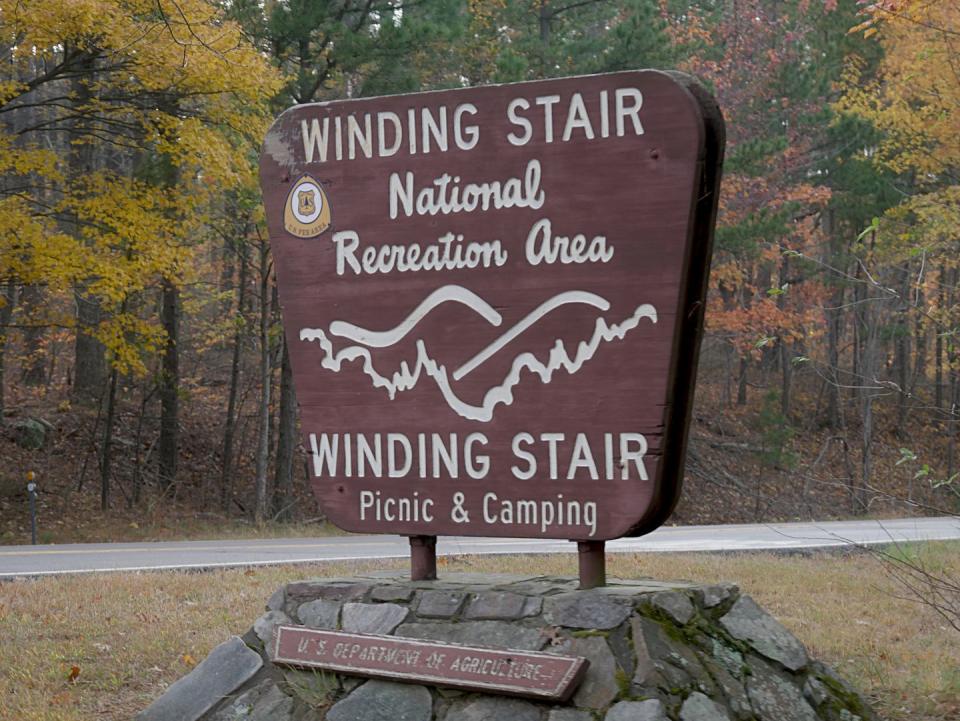
Oklahoma
The eclipse will arrive in southeast Oklahoma at 12:28pm local time, with totality beginning at 1:45 p.m. Some of the best places to watch are at state parks. Located in Ouachita National Forest, Winding Stair Recreation Area offers one of the highest view points (about 2,400 feet) to take in the eclipse, as well as the Winding Stair Mountain Range. Set up a viewing spot along the water at Clayton Lake, Lake Wister, or Beavers Bend State Park, or head to nearby Fenley Farms, which is hosting campers for family-friendly eclipse viewing.
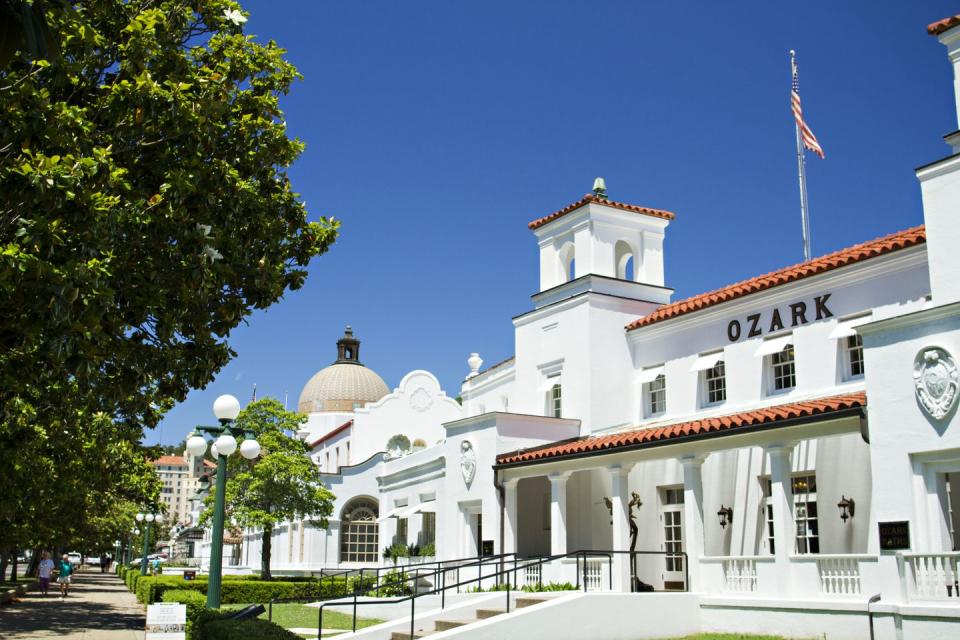
Arkansas
Hot Springs, Arkansas, will have a prime location for eclipse watching—totality beings at 1:49 p.m. CST and lasts for about three minutes and thirty-seven seconds. The town of Hot Springs will host several events leading up to the eclipse including a free concert and presentation from NASA, as well as a watch party at the Mid-American Science Museum. Mill Creek Music Farm is hosting a two-day festival of bluegrass, blues, and folk performances, while Atlas Obscura is hosting a four-day Ecliptic Festival at Cedar Glades Park. Hot Springs National Park is one of only two national parks in the path of totality, and campsites can be reserved at Gulpha Gorge.
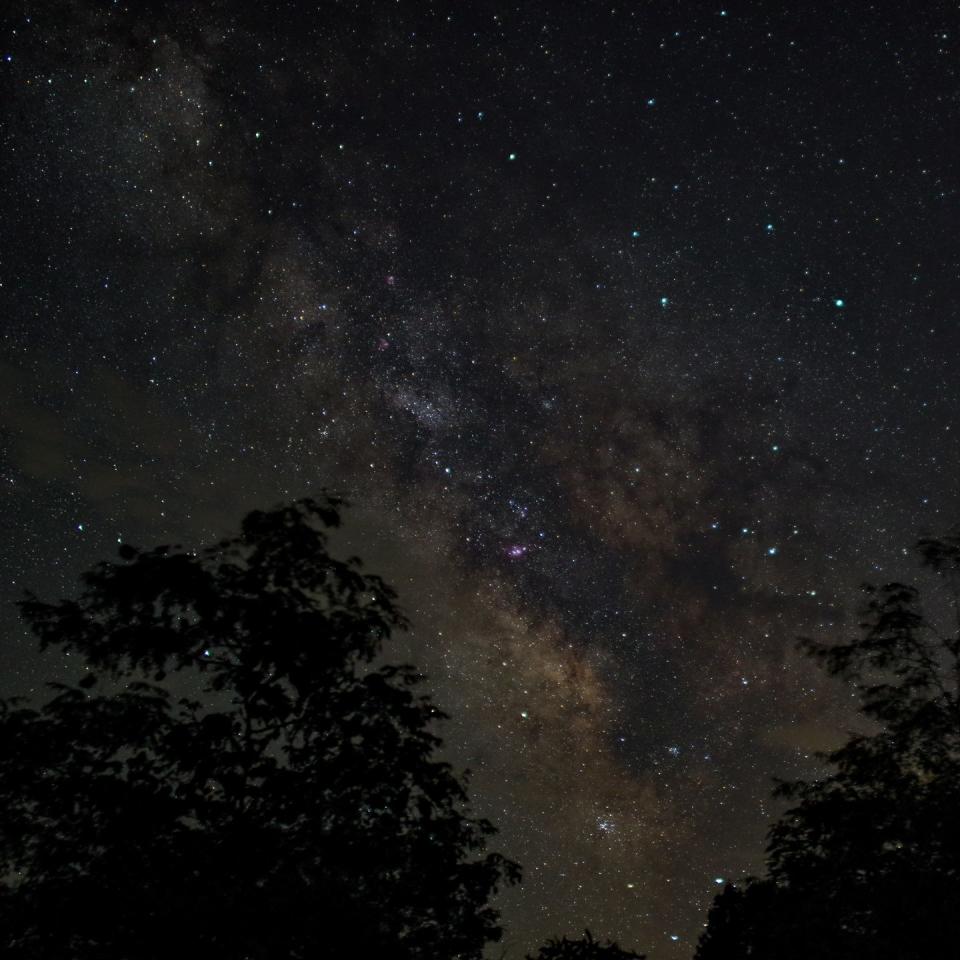
Missouri
Southeastern Missouri lies in the path of totality, and towns and state parks in the region are ready to welcome sky gazers. Poplar Bluff offers more than four minutes of total eclipse viewing time–the town kicks off four days of celebrations with fireworks on April 5, a music festival on April 6, and a viewing party with food, music, and guest astronomy speakers on April 8 (totality beings at 1:56 p.m. CST). The total eclipse will also be viewable from points throughout Mark Twain National Forest (be sure to check out their list of the best viewing spots).
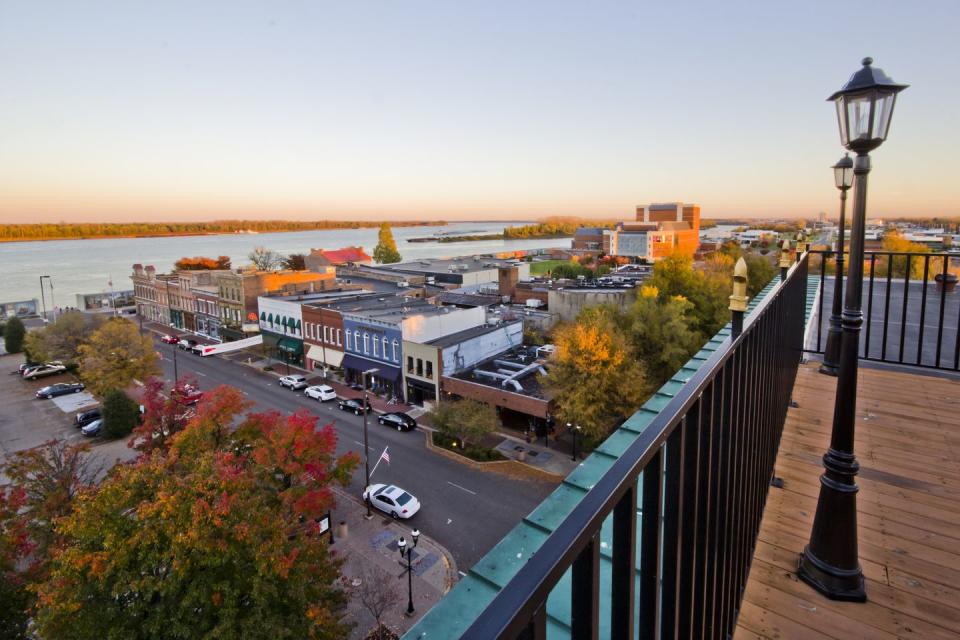
Kentucky
The path of totality will last between one and three minutes depending on your spot in Kentucky. The port city of Paducah will celebrate its two minutes of totality with an "X Marks the Spot" eclipse festival downtown, with science and art activities for all ages. The National Quilt Museum is also hosting a viewing party on their lawn (BYO quilt and picnic) and a community quilt-making project to celebrate the eclipse.
The town of Henderson is also a prime destination for eclipse viewers, with picnic-friendly vantage points along the Ohio River as well as at John James Audubon State Park, named for the renowned naturalist who studied birds here in the early 19th century.
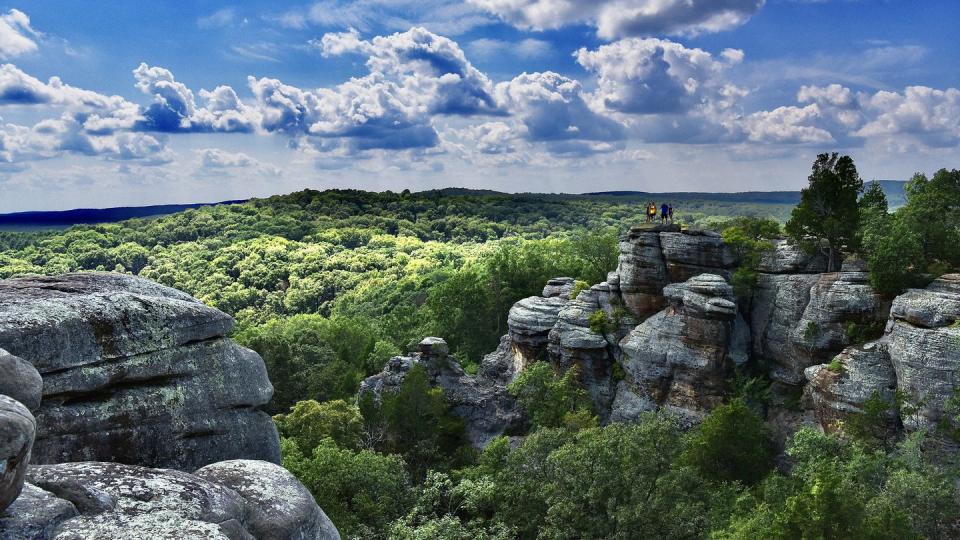
Illinois
Southern Illinois is the "eclipse crossroads of America" as it was the centerline of both the 2017 eclipse and this year's event. Carbondale, home to Southern Illinois University, will host an eclipse festival in their football stadium on April 8. Eclipse-chasers who prefer natural surroundings can opt to take in the more than four minutes of totality from the unique rock formations in the Garden of the Gods, part of Shawnee National Forest.

Indiana
NASA will be broadcasting live from the Indianapolis Motor Speedway as the path of totality begins just after 3 p.m. on April 8. Join in the event to chat with eclipse experts and experience programming around racing and space exploration (admission includes a pair of limited-edition solar eclipse glasses). To the south, Festival Country will have a long list of eclipse-inspired events including a party at a flower farm in Franklin, while Fishers to the north will host an eclipse celebration at Conner Prairie living history museum with music and dance performances, as well as a talk with Hoosier astronaut, Mark Brown.
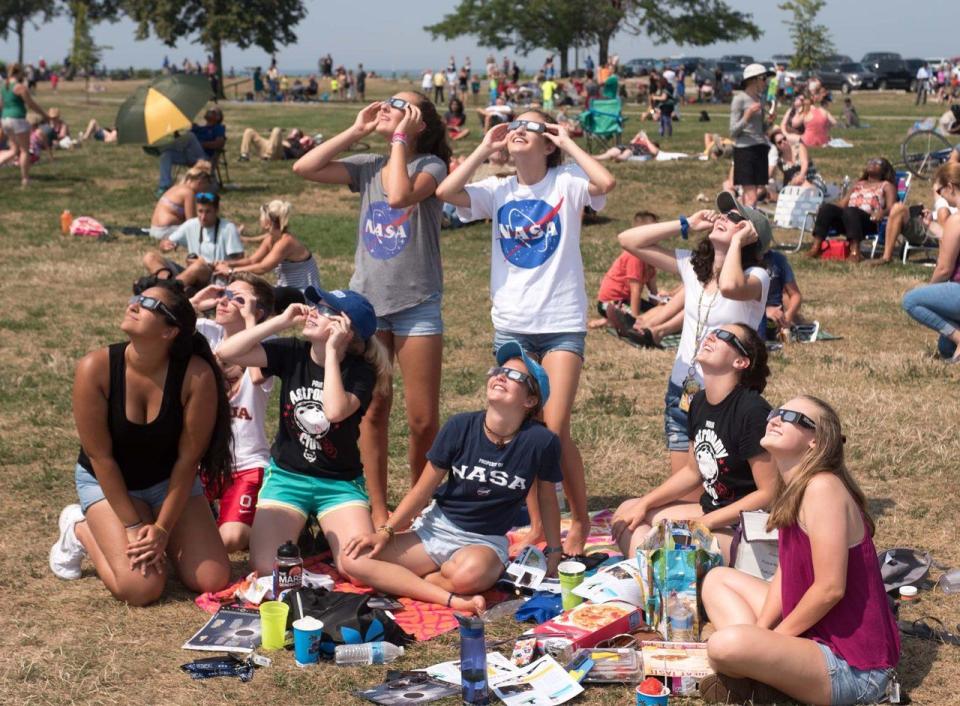
Ohio
Cleveland is home to the only NASA Visitors Center in the path of totality, located at the Great Lakes Science Center, which will host a three-day Total Eclipse Fest 2024 from April 6-8. Events include a free concert by the Cleveland Orchestra, which will perform music from Star Wars and more, paired with images from the Hubble Telescope, International Space Station. and archival photos from NASA. The Cleveland Museum of Natural History is also hosting a series of programs like planetarium shows with astronomers and a viewing party in University Circle's Wade Oval. In Dayton, the National Museum of the U.S. Airforce will host an all-day event with hands-on activities, rocket launches, and hot air balloons, while the Boonshoft Museum of Discovery will feature science lab demos and more.
Smaller Ohio towns in the path of totality—like Kent, Mansfield, and Neil Armstrong's hometown of Wapakoneta—are all hosting local festivals and viewing parties. Visitors will also find eclipse programming at Ohio State Parks, from astronomer talks to educational hikes to outdoor watch parties (see the full list of park events here).
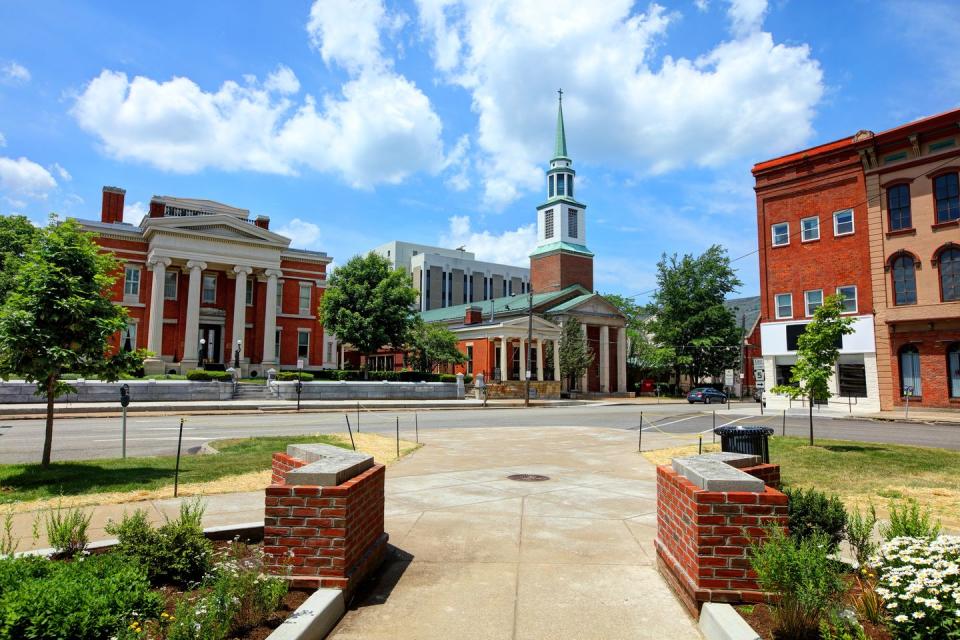
Pennsylvania
Erie is the only major Pennsylvania city in the path of totality, and it plans to welcome visitors with a long list of events in and around town. Head to UPMC Park, home to MiLB team the Erie SeaWolves, for an eclipse party featuring a live NASA feed on the video board, visit the Lake Erie Arboretum at Frontier Park for their "Park Side of the Moon" celebration with poetry readings, food, and live music, or board the Victorian Princess river boat for a special eclipse cruise along Lake Erie.
There are also four Pennsylvania state parks that fall within the path: Presque Isle State Park, Erie Bluffs State Park, Pymatuning State Park, and Maurice K. Goddard State Park. Many are offering educational programs ahead of the eclipse, so be sure to check the calendar of events leading up to April 8.
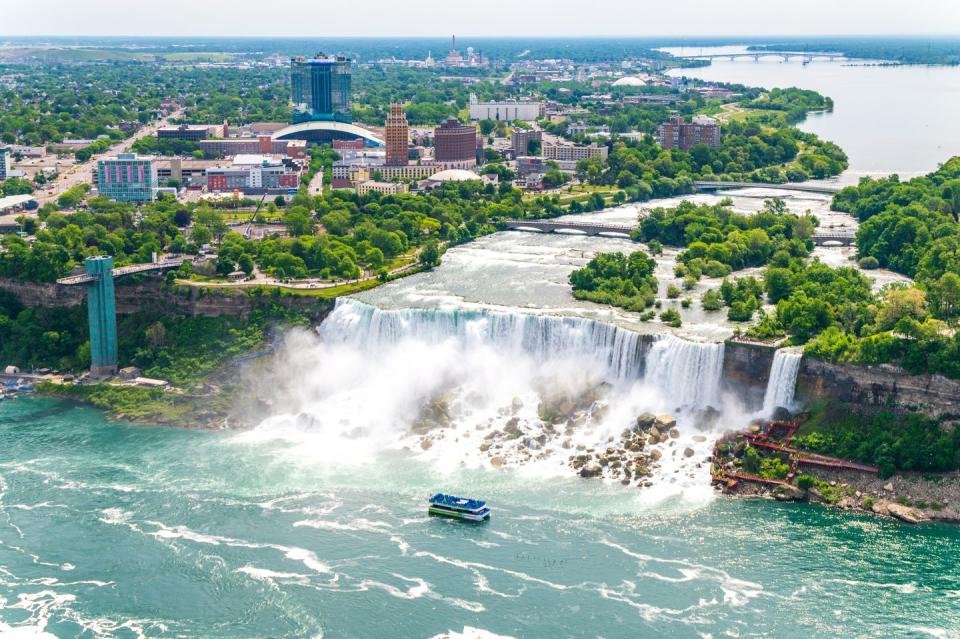
New York
Full totality begins in Chautauqua County at 3:17 p.m. and moves across the Empire State over the next eight minutes. There are many beautiful outdoor spots to take in the event, including Niagara Falls, where festivities include talks with astronauts, space-themed musical performances, special guided tours of the Falls, a street festival, and a fireworks display.
In the Adirondack Mountains, visitors can attend "Totality in Tupper"with eclipse programming set against the backdrop of Tupper Lake. The Wild Center, a hub for scientific learning in the area, will host a free community day with activities like DIY pinhole viewers, immersive and interactive eclipse-inspired musical experiences, and more. The Adirondack Sky Center is also offering free admission for eclipse-themed science talks, planetarium shows, and crafts.
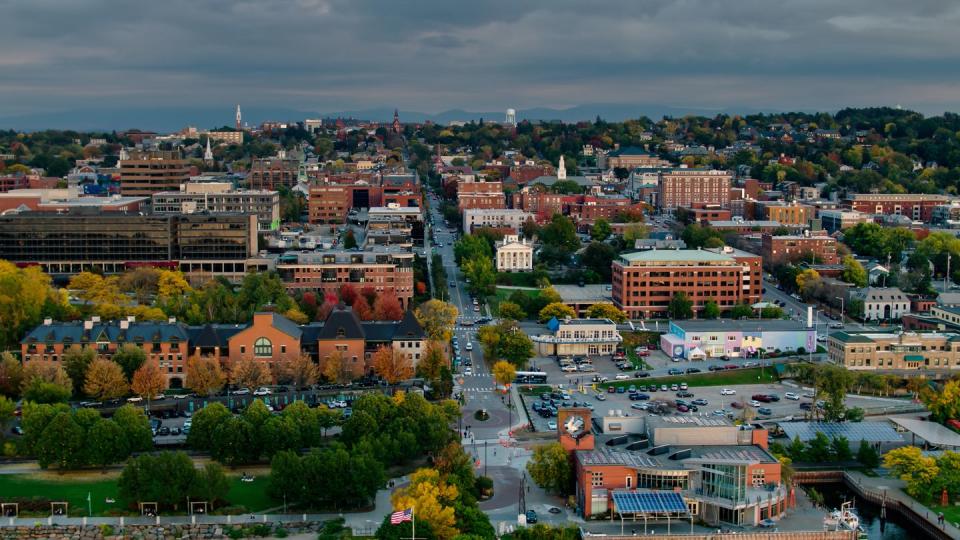
Vermont
It doesn't get more "Vermont" than experiencing the eclipse alongside maple sugaring season. That's just what visitors to Lunenburg can expect at their April 8 eclipse celebration on the town common, which will feature interactive and photographic maple-sugaring displays, products from local sugarhouses, and all the maple cotton candy and sugar-on-snow you can eat.
In Burlington, science and nature museum ECHO Leahy Center at Lake Champlain will team up with Vermont Astronomical Society for a day of educational programming and activities on April 8, with eclipse glasses included with admission. Nearby, Shelburne Farms will be hosting a viewing party with live music and food on its 1,400 acres. Vermont's ski areas are getting in on the action too, with Sugarbush, Smuggler's Notch, and Jay Peak hosting eclipse viewing parties and events.
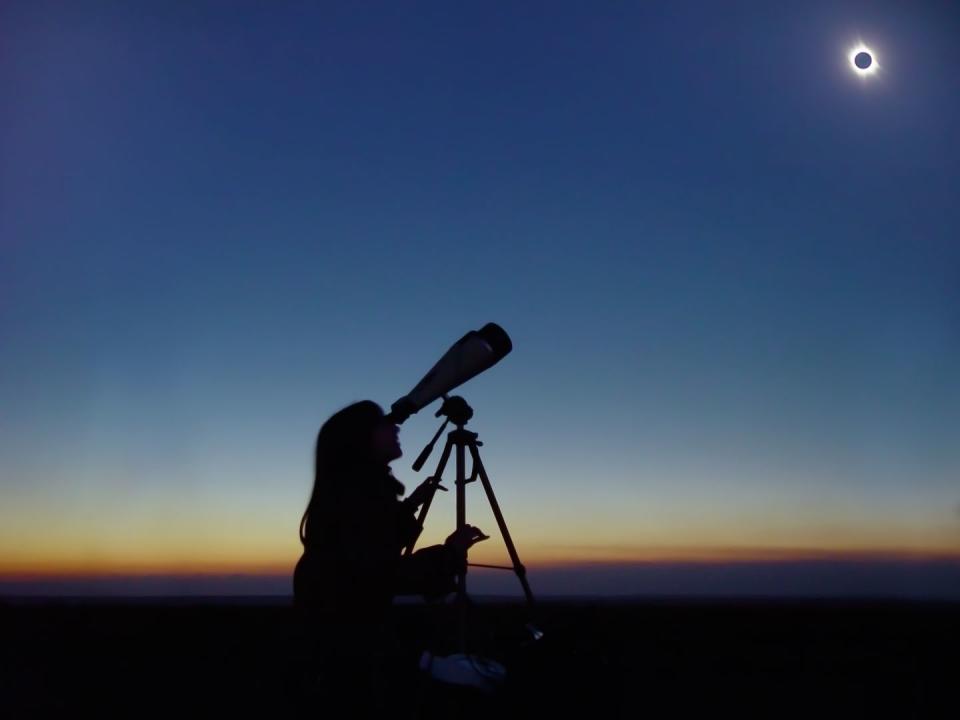
New Hampshire
The northern third of the Granite State will experience a total eclipse, arriving at 3:28p.m. Mount Washington Observatory is hosting educational programs leading up to April 8, as well as a family-friendly viewing party with MWOBS educators at Coleman State Park. The Great North Woods region will experience totality, where visitors can also explore terrestrial adventures like exploring the state's covered bridges, scenic bike paths, and beautiful hikes.
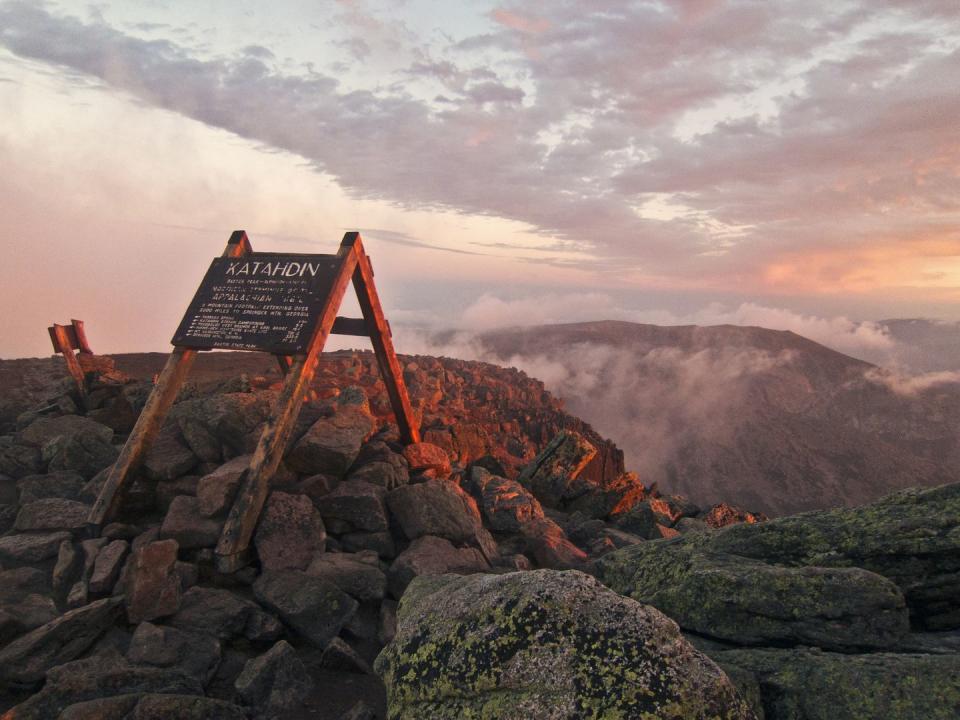
Maine
The eclipse may be taking place in remote parts of the Pine Tree State, but that isn't dampening the celebrations. The New England Outdoor Center is hosting a viewing party on Millinocket Lake, overlooking Katahdin, the state's highest mountain. Small towns like Houlton, Island Falls, and Rangeley are all planning festivals for visitors, while in Presque Isle, visitors can follow Route 1 to find all the parts of the Maine Solar System Model, the largest 3-D scale model of the solar system in the western hemisphere.
Monday, April 8 sees the first total solar eclipse since 2017 make its way across North America. According to NASA, the path of totality—a band about 115-miles wide where the moon completely blocks the visible surface of the sun—will pass through Mexico, then make its way across Texas, Oklahoma, Arkansas, Missouri, Illinois, Kentucky, Indiana, Ohio, Pennsylvania, New York, Vermont, New Hampshire, and Maine. Totality will last between three-and-a-half and four minutes in most places along the path.
While almost all of North America with clear skies will experience a partial eclipse, what makes the path of totality special is the ability to see the sun’s outer atmosphere, the corona, which isn’t normally visible because of the brightness of the sun’s photosphere. According to the American Astronomical Society, viewers in the path of totality can also expect the sky to turn twilight blue with streaks of the oranges, reds, and yellows seen at sunset and sunrise.
Since the next total eclipse visible from the contiguous United States won’t take place until 2044, cities and towns within the path of totality are understandably going all out to make the most of April 8. From parties at state parks to festivals at science museums, here are top spots to take in this incredible celestial event across the U.S.
You Might Also Like


